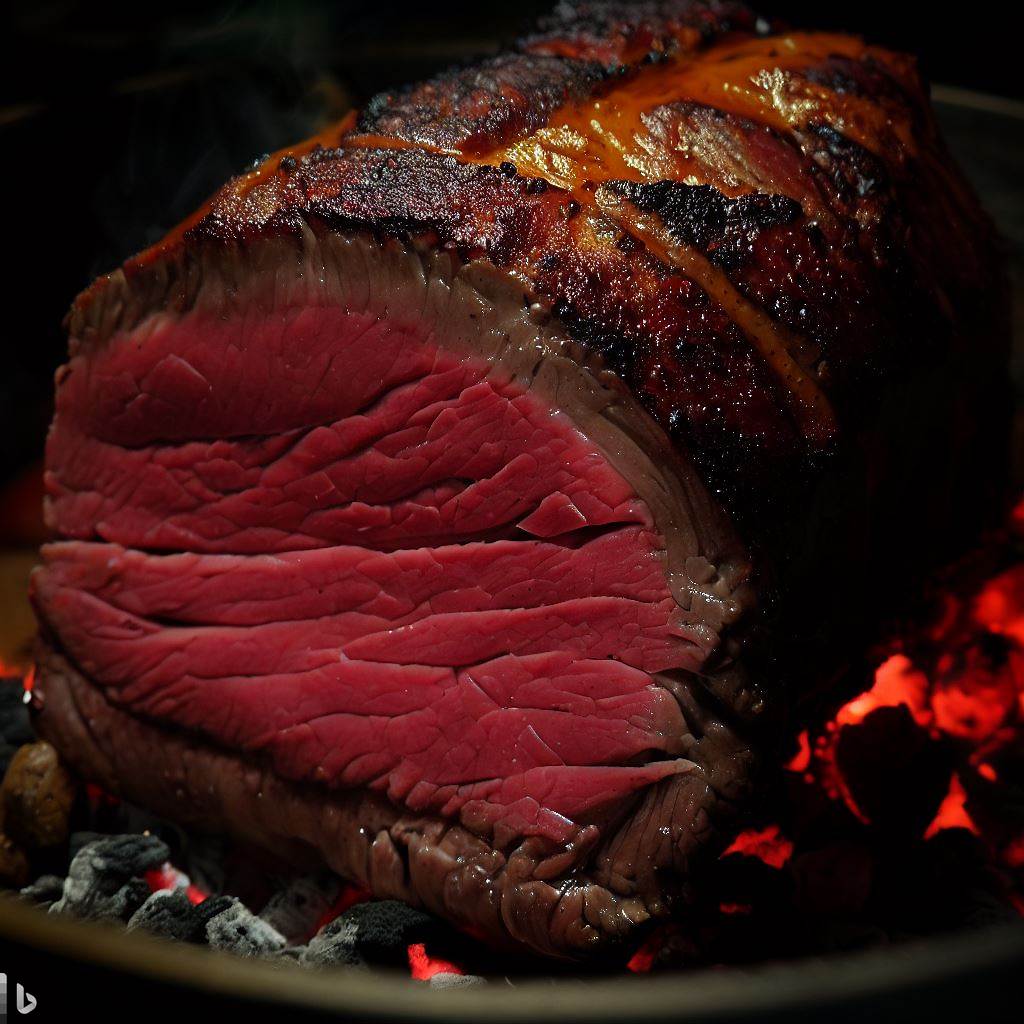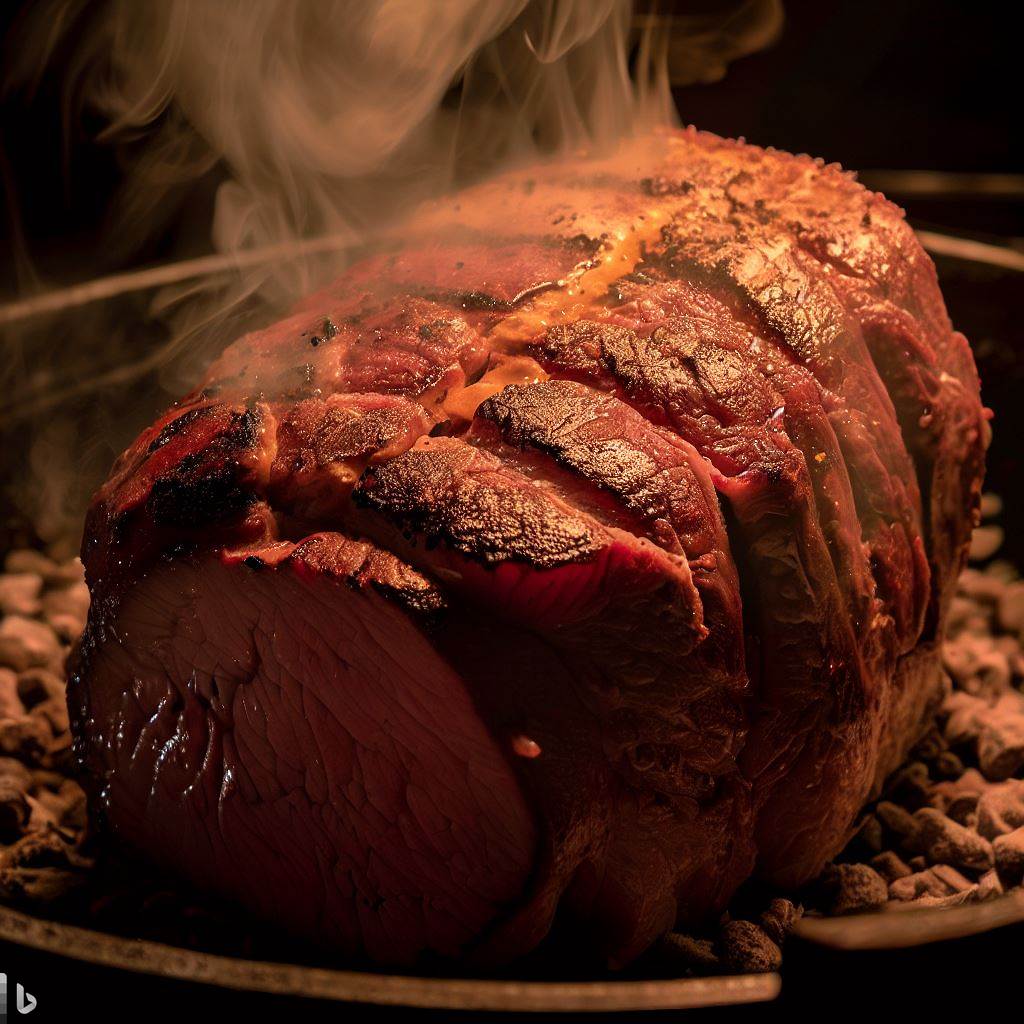When envisioning a truly succulent, mouthwatering feast, what comes to mind? If it’s not the tender, juicy perfection of a “beef tenderloin BGE,” then you’re missing out on an experience that will leave you utterly speechless.
So why settle for anything less than the best? You don’t have to be a Michelin-starred chef or even own an outdoor grill to perfect this culinary masterpiece in your very own kitchen. I’m here to guide you through every step – from picking out that prime cut at your local butcher’s shop right down to getting that ideal sear on your sizzling steak.
In this article, you’ll walk away with not only an appetite but also knowledge – how amazingly simple yet overwhelmingly satisfying cooking beef tenderloin can be! We’re going way beyond basic grilling techniques here into territory where epicurean dreams come true. Let’s dive into this flavorful journey together!
Here is an article you might be interested in bge filet mignon
Here is also another exciting article to read bge hamburgers
Selecting the Right Cut of Beef Tenderloin
When it comes to cooking a beef tenderloin on your trusty Big Green Egg grill, one crucial decision you need to make is selecting the right cut of meat.
We all want that melt-in-your-mouth tenderness that only a perfectly cooked beef tenderloin can offer. So, how do we go about choosing the best cut?

First off, look for a whole beef tenderloin with even thickness throughout. This ensures consistent cooking and prevents any parts from being overcooked or undercooked. Additionally, opt for a tenderloin that has minimal fat marbling as this can affect both flavor and texture.
Preparing Your Big Green Egg Grill
Before firing up your Big Green Egg grill, it’s important to prepare it properly for cooking a scrumptious beef tenderloin. Start by cleaning the grates thoroughly using a wire brush to remove any leftover residue from previous grilling sessions.
Next, ensure proper airflow by adjusting the bottom vent and leaving the top vent fully open. This will help regulate temperature later on when we get down to business.
Lastly, light your charcoal briquettes in either an electric starter or using natural fire starters. Once lit, spread them evenly across the charcoal grate at the bottom of your BGE grill.
Seasoning and Marinating Your Beef Tenderloin
Now that our Big Green Egg is ready to work its magic let’s focus on enhancing those flavors! Seasoning and marinating play vital roles in creating mouth-watering grilled beef tenderloins.
Start by generously seasoning your beef tenderloin with salt and pepper or use a pre-made spice rub if you prefer additional flavors like garlic powder or dried herbs.
If you’re feeling adventurous and want to take things up another notch (or two), consider marinating your beef tenderloin. A simple marinade can be made by mixing together olive oil, soy sauce, minced garlic, Worcestershire sauce, and a touch of Dijon mustard.
Let your tenderloin soak in this flavor bath for at least a couple of hours or overnight in the refrigerator.
Setting Up The Right Cooking Temperatures on BGE
Temperature control is key when it comes to perfectly cooking beef tenderloin on the Big Green Egg grill. Here’s how you can set up the right cooking temperatures:
For direct grilling, preheat your BGE grill to around 450°F (232°C). This high heat will sear the exterior of the beef tenderloin beautifully while locking in those juices.
For indirect grilling, aim for a slightly lower temperature between 350°F (177°C) to 400°F (204°C). This method allows for more controlled cooking as heat circulates evenly around the entire cut of meat.
Techniques for Grilling Your Beef Tenderloin on a Big Green Egg
Now that our grill is hot and ready let’s dive into some techniques for grilling that mouthwatering beef tenderloin! Remember to use long tongs or spatulas when handling the meat to avoid any unnecessary poking or prodding.
1. Start by searing all sides of your seasoned and marinated beef tenderloin over direct heat. This step adds that beautiful crusty exterior we all love so much!
2. Once seared, move your beef tenderloin onto an indirect heat zone if you’re going with this method. Close the lid and allow it to cook until reaching your desired internal temperature (more on that later).
3. If you’re opting for direct grilling all throughout, keep flipping every few minutes to ensure even cooking from edge to edge. Meat thermometers are handy tools here as they help you monitor progress without having to constantly open the grill and release precious heat.
Checking and Ensuring Meat Doneness Levels
Ah, the million-dollar question: “How do I know when my beef tenderloin is done?” Fear not! We’ve got you covered. Here’s a quick rundown of meat doneness levels based on internal temperature:
a. For medium-rare, aim for an internal temperature range between 130°F (54°C) to 135°F (57°C). The center should be pinkish-red with some juice oozing out when sliced.
b. For medium, a slightly higher range of 140°F (60°C) to 145°F (63°C) will give you that juicy-pink center with just a hint of pinkness towards the edges.
c. If well-done is your thing, look for an internal temperature of around 160°F (71°C) and above. Keep in mind that beef tenderloin tends to dry out more at higher temperatures, so proceed with caution!
Remember to use your meat thermometer by inserting it into the thickest part of the tenderloin without touching any bones or gristle. This ensures accuracy in gauging doneness levels.

Resting and Slicing Techniques for Most Tenderness
Congratulations on achieving that perfect level of doneness! Now it’s time to let your grilled beef tenderloin rest before slicing into it. Resting allows juices within the meat to redistribute evenly for optimal tenderness and flavor. Here’s what to do:
1. Cover your cooked beef tenderloin loosely with aluminum foil or place it in a warm plate tented with foil. Let it rest undisturbed for about 10-15 minutes.
2. Once rested, start slicing against the grain using a sharp carving knife or chef’s knife. This helps break down any remaining muscle fibers and further enhances tenderness.
3. Cut slices about half an inch thick unless requested differently by guests who prefer thicker or thinner cuts.
4. Serve immediately to fully enjoy that perfectly cooked beef tenderloin!
Common Mistakes to Avoid When Using a BGE for Beef Tenderloin
Now that you know how to nail that beef tenderloin on your Big Green Egg, let’s talk about some common mistakes to avoid:
1. Overcooking:
Don’t let the fear of undercooking make you turn your succulent beef tenderloin into shoe leather! Pay attention to those internal temperatures and trust the process.
2. Opening the lid too often:
Every time you open the grill, heat escapes, and it takes time for it to regain its optimal temperature. Limit peeking unless necessary.
3. Neglecting proper seasoning:
A good cut of meat deserves some flavor love! Don’t skimp on seasoning and marinating as they enhance taste profiles significantly.
4. Cutting into the meat too soon:
Patience is a virtue when it comes to grilling beef tenderloins (and most meats!). Give them ample resting time before slicing into them for maximum juiciness.
Tips for Pairing Side Dishes with Grilled Beef Tenderloin
No meal is complete without some delicious side dishes accompanying our star of the show, grilled beef tenderloin! Here are a few ideas:
- Creamy mashed potatoes: The smooth texture complements the tenderness of beef tenderloin perfectly.
- Roasted vegetables: Whether it’s carrots, Brussels sprouts, or asparagus, roasted veggies add depth and color.
- Grilled corn on the cob: Nothing beats sweet and smoky flavors alongside juicy chunks of steak!
- Sautéed mushrooms: Elevate your dish with earthy mushroom flavors – perfect with any type of steak.
Don’t be afraid to get creative with sides like loaded baked potatoes or even refreshing salads if you’re after something lighter.
Serving Ideas and Presentation Suggestions for BGE Cooked Beef Tenderloin
Now that everything is cooked to perfection, let’s talk about how to serve your mouthwatering beef tenderloin in style. Here are some presentation suggestions:
- Slice the beef tenderloin into medallions and arrange them neatly on a platter. Garnish with fresh herbs like rosemary or thyme for an elegant touch.
- Create a DIY steak bar where guests can assemble their own sandwiches using sliced tenderloin, buns, various condiments, and toppings.
- For smaller gatherings or intimate dinners, plate individual servings of beef tenderloin alongside your chosen side dishes. Drizzle some sauce over the meat for added flavor.
Remember that presentation is just as important as taste when it comes to creating memorable dining experiences!
Conclusion
Mastering the art of cooking a beef tenderloin on the Big Green Egg grill requires attention to detail from selecting the right cut to properly seasoning and marinating before hitting those optimal cooking temperatures.
Don’t forget about resting times and avoiding common mistakes that could sabotage all your hard work! With these tips in hand, you’ll be grilling up perfectly delicious beef tenderloins in no time – leaving your friends and family begging for more!
Read another exciting blog post here bge meatloaf
This is the article to read for today bird in air duct
FAQs On Beef Tenderloin bge
Q: What is the best recipe for smoking a beef tenderloin on a Big Green Egg?
A: The best recipe for smoking a beef tenderloin on a Big Green Egg involves marinating the meat in your favorite blend of spices and herbs, then smoking it at a low temperature over wood chunks until the internal temperature reaches your desired level of doneness.
Q: How long should I smoke the beef tenderloin for?
A: The smoking time for a beef tenderloin can vary depending on the size of the roast and the temperature of your smoker. On average, you can expect to smoke a beef tenderloin for about 20 minutes per pound at 275 degrees Fahrenheit.
Q: Can I wrap the beef tenderloin in foil while smoking?
A: While it is not necessary to wrap the beef tenderloin in foil while smoking, some people prefer to do so to help retain moisture. However, keep in mind that wrapping the meat in foil can prevent the smoke flavor from fully penetrating the meat.
Q: Should I let the beef tenderloin come to room temperature before smoking?
A: Yes, it is recommended to let the beef tenderloin come to room temperature before smoking. This allows for more even cooking and helps to prevent the meat from drying out.
Q: Do I need to tie the beef tenderloin before smoking?
A: Tying the beef tenderloin is not necessary, but it can help the roast maintain its shape while smoking.
Q: How long should I let the smoked beef tenderloin rest before slicing?
A: After smoking, it is important to let the smoked beef tenderloin rest for at least 10 minutes before slicing. This allows the juices to redistribute and helps to ensure a tender and juicy final product.
Q: Can I reheat the smoked beef tenderloin?
A: Yes, you can reheat the smoked beef tenderloin. To do so, wrap it in foil and heat it in a preheated oven at 325 degrees Fahrenheit until warmed through.
Q: How long can I refrigerate the leftover smoked beef tenderloin?
A: You can refrigerate the leftover smoked beef tenderloin in an airtight container for up to 3 days.
Q: Is smoked beef tenderloin suitable for any occasion?
A: Absolutely! Smoked beef tenderloin is a versatile dish that can be enjoyed for any occasion, from casual backyard gatherings to special celebrations.
Q: How should I impress my guests with smoked beef tenderloin?
A: To impress your guests with smoked beef tenderloin, you can serve it alongside delicious sides of your choice, such as grilled vegetables or loaded baked potatoes. The rich smoky flavor of the meat paired with flavorful sides is sure to leave a lasting impression.
